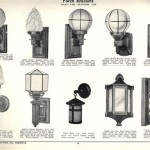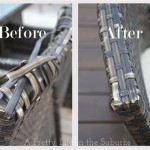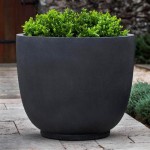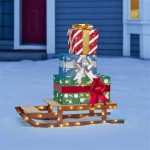Attaching Outdoor String Lights to a House
Outdoor string lights enhance the ambiance of any outdoor space, creating a warm and inviting atmosphere for gatherings and relaxation. Installing them properly ensures both safety and aesthetic appeal. This article provides a comprehensive guide on how to securely and effectively attach outdoor string lights to a house.
Planning and Preparation
Before beginning the installation process, careful planning is essential. This includes determining the desired location of the lights, measuring the area to calculate the required length of string lights, and identifying suitable attachment points on the house.
Checking the power source is crucial. Ensure there's an outdoor-rated electrical outlet within reach of the string lights or consider hiring an electrician to install one. Understanding the type of string lights – incandescent, LED, or solar – is important, as each type has different power requirements.
Gathering Necessary Tools and Materials
Having the correct tools and materials on hand simplifies the installation process. Essential tools include a ladder, measuring tape, drill with appropriate drill bits for the house's exterior material, a level, and a voltage tester. Materials needed include the string lights themselves, outdoor-rated extension cords (if necessary), appropriate fasteners (screws, hooks, clips), and potentially a hammer if working with masonry.
Choosing the Right Fasteners
Selecting the correct fasteners is crucial for secure attachment and depends on the house’s exterior material. For wood siding, exterior-grade screws provide a strong hold. Masonry walls require concrete screws or anchors. For vinyl or aluminum siding, specialized clips designed for these materials prevent damage and offer a secure attachment point. Utilizing the incorrect fasteners can lead to instability or damage to the house's exterior.
Attaching the Lights to the House
Begin by identifying sturdy attachment points along the desired path of the string lights. These points should be structurally sound and able to support the weight of the lights. Mark these points with a pencil to ensure proper placement.
Using the selected fasteners, carefully attach hooks, screws, or clips at the marked points. Ensure these are installed straight and level for a professional appearance. If using a drill, choose the appropriate drill bit for the exterior material and predrill holes to prevent cracking or splitting. A level ensures the lights hang evenly.
Carefully string the lights along the installed fasteners, ensuring the bulbs are evenly spaced and the cords are taut but not overly tight. Avoid placing excessive strain on the cords, as this can lead to damage. Securely connect the string lights to the power source, verifying the voltage with a voltage tester before plugging them in.
Safety Considerations
Safety is paramount when working with electricity. Always turn off the power at the breaker box before working with any electrical connections. Use outdoor-rated extension cords and lights specifically designed for exterior use to protect against weather damage. Ensure all connections are secure and weatherproof to prevent electrical hazards.
When using a ladder, ensure it is placed on a stable and level surface. Avoid overreaching; it's better to reposition the ladder than risk a fall. Consider having a helper to assist with holding the ladder and passing tools.
Utilizing Different Hanging Techniques
Several hanging techniques can achieve different aesthetic effects. Guide wires provide a discreet and professional look, especially for longer spans. These wires offer support and allow the lights to be strung in straight lines. Alternatively, cup hooks offer a simple and cost-effective solution for attaching lights to eaves and railings.
For a more rustic look, consider using outdoor-rated rope or twine to create a draped effect. This can add a charming touch to pergolas, trees, and fences. Ensure the rope is securely fastened and can withstand the weight of the lights.
Maintaining Your Outdoor String Lights
Once installed, proper maintenance ensures the longevity of your outdoor string lights. Regularly inspect the lights and connections for any damage or wear. Replace any damaged bulbs promptly to prevent overloading the remaining bulbs. During the off-season, store the lights properly in a dry and protected location to shield them from the elements and prolong their lifespan.

28 Backyard Lighting Ideas How To Hang Outdoor String Lights

How To Hang Patio String Lights Blue I Style

How To Hang String Lights Outdoors

How To Hang Outdoor String Lights Flip The Switch

How To Hang Outdoor String Lights Wildfire Interiors

How To Hang Outdoor String Lights Lighting Company Wilmington
How To Hang Patio Lights

How To Hang Outdoor String Lights Flip The Switch

How To Hang Outdoor String Lights And Make Them Look Good Wirecutter
How To Hang Outdoor String Lights Resource Article By Partylights Com
Related Posts







